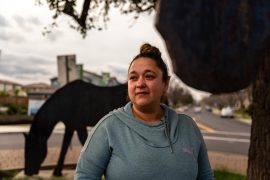PBS’ ‘NewsHour’ Looks at Health Care Access Problems in New Mexico
PBS' "NewsHour with Jim Lehrer" on Wednesday examined access-to-care issues facing people who live in rural New Mexico, the state with the second-highest rate of uninsurance in the country. More than half of all New Mexico residents live in non-urban areas, often in towns that have no pharmacy and few physicians.
Many of these uninsured residents work for small businesses that cannot afford to offer coverage, and they must rely on outreach programs that work with insurers and drugmakers to provide basic services, including blood pressure checks and diabetes screenings. A physician shortage in the state has forced many primary care physicians in small communities to be on call 24 hours a day and seven days a week. Additionally, because of the overwhelming demand for physicians, some rural residents must travel to the closest urban emergency department to receive immediate treatment.
"NewsHour" also examined medical care on American Indian reservations. The state's 200,000 American Indians have the highest rate of diabetes, pneumonia and alcoholism of any other group in the state, and the highest death rate. According to "NewsHour," Indian Health Services, which operates hospitals on reservations, "has been chronically underfunded by Washington for decades." One hospital profiled has three physicians and 13 beds to serve 4,000 reservation residents. The facility is able to treat only the most basic health problems, according to "NewsHour." In addition, some reservation residents do not seek care at IHS facilities because they believe the care is inadequate.
The report featured comments from Jane Batson, dean of health at Eastern New Mexico University; Cliff Waide, mayor of Hagerman, N.M.; Carleton Naiche-Palmer, president of the Mescalero Apache tribe; and Ulysses Velez, a physician (Bowser, "NewsHour with Jim Lehrer," PBS, 10/15).






